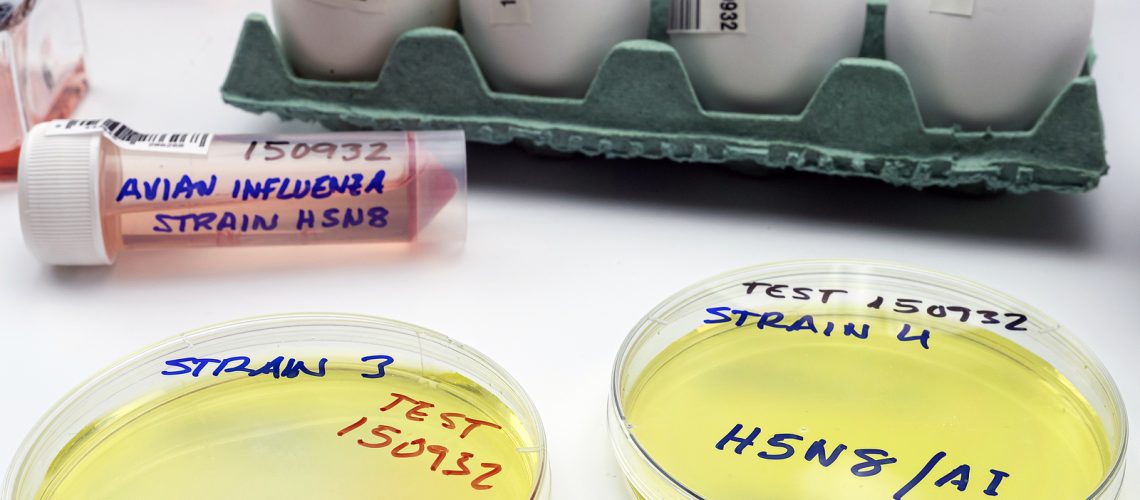A man tested positive for the bird flu virus A(H5) in the United States, reported in Colorado and confirmed by CDC. This case occurred in a person with direct contact with poultry that was involved in culling (depopulation) poultry that had a suspected case of H5N1 bird flu. The patient reported fatigue as his sole symptom for several days and has since recovered. The patient was isolated and treated with oseltamivir, an antiviral medication used against influenza. While it is possible that the detection of the H5 avian influenza virus was the result of nasal membrane surface contamination, that cannot be determined at this time, and the positive test results met the criteria for an H5 case.
The appropriate public health response is at this point to presume that this is an infection and to act to contain and manage it. This case does not alter the CDC’s assessment of human risk for the general public, which is considered on the Center’s website. However, individuals with work-related or leisure-time exposures to the infected birds are at higher risk of exposure and should use the appropriate precautions described in the CDC guidance. CDC has been monitoring illnesses in people exposed to H5N1 virus-infected birds since those outbreaks were detected in wild birds and poultry across the United States in late 2021 and early 2022. H5N1 viruses have been detected in commercially farmed and domesticated birds in 29 U.S. states and wild birds in 34 states.
CDC has monitored the health of over 2,500 individuals who were exposed to H5N1-infected birds, the only cases found so far. Other people involved with the Colorado harvesting operations tested negative for H5 virus infections but were tested again for excess caution. This is the second human case associated with this particular cluster of H5 viruses, which is now prevalent, and the first in the U.S. The first case internationally occurred in December 2021 in the U.K., in a man with no symptoms who was raising birds who had been infected with H5N1. More than 880 cases of the early H5N1 virus in humans have been reported since 2003 globally. However, the predominant H5N1 virus currently spreading among birds worldwide is not similar to the early H5N1 virus.
Infected birds excrete H5N1 viruses into their saliva, mucous, and stool. H5N1 infection in humans is rare; however, the human disease may occur if sufficient viruses enter the person’s eyes, nose, or mouth or are inhaled. People who come in close or sustained unprotected contact (without wearing respiratory or eye protection) with an infected bird, or places where infected birds or their feces, saliva, or excrement has touched, can be at increased risk for infection with H5N1. Diseases of humans resulting from infection with the bird flu virus range from mild (e.g., eye infections, upper respiratory symptoms) to severe illnesses (e.g., pneumonia) that could lead to death. The only prior human cases associated with this cluster of H5N1 viruses have produced no symptoms.
Past transmission of the H5N1 virus early on, from an infected individual to close contacts, has occurred only very rarely and has not resulted in continuous transmission between individuals. Local, state, and federal public health partners are working together to prevent the spread of this H5N1 virus between birds and humans. The United States Department of the Interior and United States Department of Agriculture (USDA) are the primary federal departments conducting investigations and controlling bird avian influenza outbreaks in wildlife, while the USDA’s Animal and Plant Health Inspection Service is the primary agency conducting similar activities among domestic birds, such as poultry.
The U.S. Department of Health and Human Services and CDC is the lead federal partners in public health in this situation. This single case of human infection with H5 does not alter our evaluation of human health risks. CDC has stated that they will continue to monitor this situation carefully to look for signs that the threat to human health has changed.
Signs that may increase public health risks may include more reports of H5N1 virus infections among humans resulting from exposure to birds or identification of transmission from an infected individual to close contacts. The CDC is also monitoring H5N1 viruses for genetic changes that are associated with adaptations in mammals, which might suggest that the virus is adapting to be able to more easily spread from birds to people. The Center has advised standard precautions for preparedness and prevention, including the existing vaccine candidate virus, which can be used to produce vaccines for humans, should they become necessary. A good starting point is to study Rosmar Group Biosecurity Toolkit to implement best practices and CDC guidelines for clinicians, public health practitioners, and individuals who may have been exposed to birds.
As a reminder, people should avoid touching birds that look sick or are dying and avoid touching surfaces that look like they might have been contaminated by the stool of wild birds or domesticated birds, if at all possible. If you must handle wild birds or poultry that are sick or dead, minimize direct contact by wearing gloves and washing your hands with soap and water after touching birds. If you can, wear respiratory protection, such as a medical mask, and eye protection, such as goggles.
It is safe to eat poultry and poultry products in the United States when they are handled and cooked correctly. Properly managing and cooking poultry and eggs to an internal temperature of 165 Fahrenheit will kill bacteria and viruses, including H5N1 viruses.
Additional information about taking safety actions with birds, including what to do if you find a dead bird, is available. At Grupo Rosmar, we have developed guidelines based on CDC procedures for companies that handle poultry food processing, including poultry workers and those responding to outbreaks.


